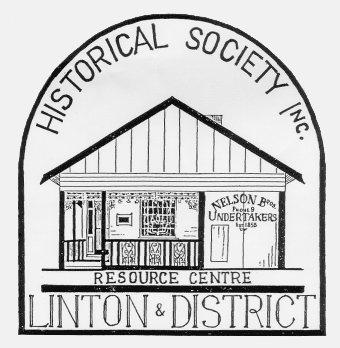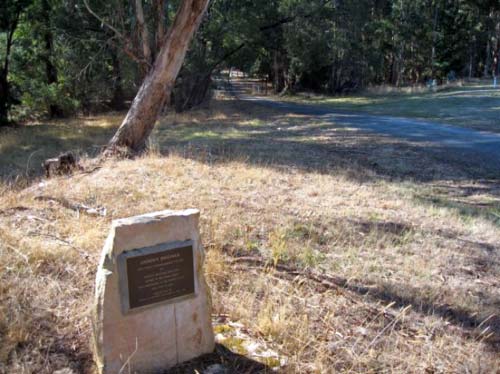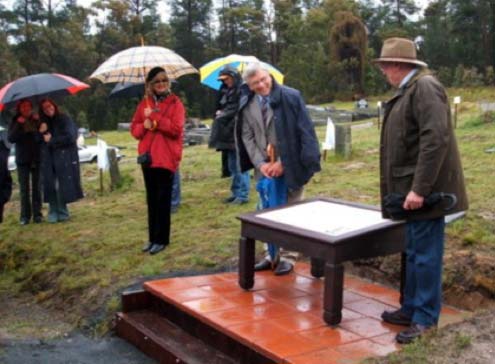About Linton & District Historical Society
Aims and objectives
- To foster historical interests and disseminate knowledge of Linton and district.
- To undertake and encourage historical research of Linton and district.
- To collect items of historical interest of Linton and district.
- To promote the preservation of items of historical interest of Linton and district.
- To raise funds for the fulfilment of the above.
History of the Society
The Linton and District Historical Society was formed in October 1981 following a public meeting to gauge local interest two weeks earlier. Two of the instigators were Letty Armstrong, the local postmistress, and Beatrice Brewster, a recent retiree to Linton, who, although themselves relative newcomers to the town, thought it was important to record the history of the area as it was still remembered at that time by many of the older, longstanding residents of Linton. The first committee consisted of President, Beatrice Brewster, two Vice Presidents, Judy Nicol and Max Standish, and Secretary/Treasurer, Letty Armstrong.
In the early years, the Society focussed on acquiring a collection of papers, photographs and memorabilia donated by people from the district, and on stimulating local interest in the Historical Society through exhibitions and 'Back to Linton' reunions.
A Permanent Home
 In 1985, after years of meeting at different venues, the Society's quest for a permanent home was realised when the then Grenville Shire Council purchased the run down 'Nelson's Undertakers' and leased the building to the Historical Society. Members immediately started work to restore the building as a Resource Centre.
In 1985, after years of meeting at different venues, the Society's quest for a permanent home was realised when the then Grenville Shire Council purchased the run down 'Nelson's Undertakers' and leased the building to the Historical Society. Members immediately started work to restore the building as a Resource Centre.
In addition to the Society's fundraising ventures and substantial donations from Mr Theo Nelson and the Linton CWA, a grant from the Australian Bicentennial Committee enabled the completion of the building in time for the official opening on Australia Day 1989.
Society's Newsletter
The Society's first newsletter, Society Notes, was published in July 1986, being edited by the Society's Secretary, Letty Armstrong, who continued this task for twenty-three years until her death in 2009. Society Notes continues now as a larger, quarterly publication. This newsletter has been invaluable for keeping non-local members in touch with Society news and therefore helping to maintain a large membership in the Society.
Other Significant Achievements for the Society
1989: the publication of A Pictorial History of Linton, 1839-1989.
This was the first published history of the town since the 1939 Centenary history, Looking back over 100 years, 1839-1939. The new book included some of the historical detail of the earlier volume but brought it up to date to the 1980s. Its main feature, however, was the inclusion of many photos of local people and local scenes from the Society's now large photograph collection. [Both these publications are now out of print.]
Linton's Diggings commenorative plaque
November 1991: a plaque commemorating the site of the original Linton's Diggings was unveiled near the Linton cemetery, during 'Back to Linton' celebrations.

Plaque commemorating the site of the original Linton's Diggings,
unveiled 1991 by Linton and District Historical Society.
Linton cemetery is in background.
Preservation of the Linton Free Library building
1991-1992: negotiations commenced with Golden Plains Shire regarding the Society managing the 1874 Linton Free Library (owned by the Shire) in order to preserve it. The Society commenced restoration of the verandah (which had been removed).
Avenue of Honour signs
1996: in response to a request from the Society, Golden Plains Shire erected signs identifying the Avenue of Honour, planted in Denison St in 1918 'to commemorate Linton's contribution to the Australian Imperial Forces.'
Involvement in naming of roads
1998: the Society was involved with the Shire in the naming of some of the minor roads around Linton, suggesting the names of longstanding local families with relevant associations with these locations.
Historical police cell reservation
March 1999: the historic police cell at the rear of the Police Station was officially handed over to the Society's care and removed to the rear of the Resource Centre by crane. The Society subsequently re-roofed and repainted it.
Restoration of the 1874 Library
End of 1999: agreement between the Shire and the Society that the Society would become the Management Committee of the 1874 Library (on condition that the Shire be responsible for essential repairs). The Shire encouraged the Society to use the Library for its activities to keep the building in use. Restoration of the interior commenced.
Linton War Memorial
2003: the completion and dedication of the Linton War Memorial on Anzac Day after six years of work by Society members. The total cost was $15,000, with $4000 of this coming from the Commonwealth, and the remainder raised within the local community.
Commemoration of the Chinese pioneers
2007: erection of a commemorative board in the Chinese section of the Linton cemetery to the Chinese pioneers of the district. The Society attempted to identify the seventy-four Chinese buried there.

Dedication of the commemorative board to the
Chinese settlers in the cemetery, Linton, 2007.
Avenue of Honour 90th anniversary memorial
2009: erection of a memorial commemorating the 90th anniversary of the planting of the Avenue of Honour.
Publications
2011: with the help of a grant from the Holsworth Trust, publication of A Walk-Drive Tour of Linton, a booklet containing two history walks around the town of Linton and one drive around the surrounding district.
2015: Linton Makes History: An Australian Goldfields Town and its Past, by Jill Wheeler. Based on Jill’s PhD on the history of Linton, this is a detailed and scholarly history of the town and its people from the indigenous past through multiple layers of immigration to the present.
2017: Linton: A Photographic History, by Jill Wheeler and Del Atkinson. A history of Linton as told through historic photographs from the extensive collection of the Linton and District Historical Society.
See details about how to purchase these publications.
Our on-going work
In addition, the Society continues the ongoing day-to-day work of digitally cataloguing our collection, of maintaining our premises, applying for grants where appropriate, undertaking research in response to inquiries, organising and conducting meetings, publishing a newsletter, working on further publications on Linton's history, and doing a range of administrative tasks.
